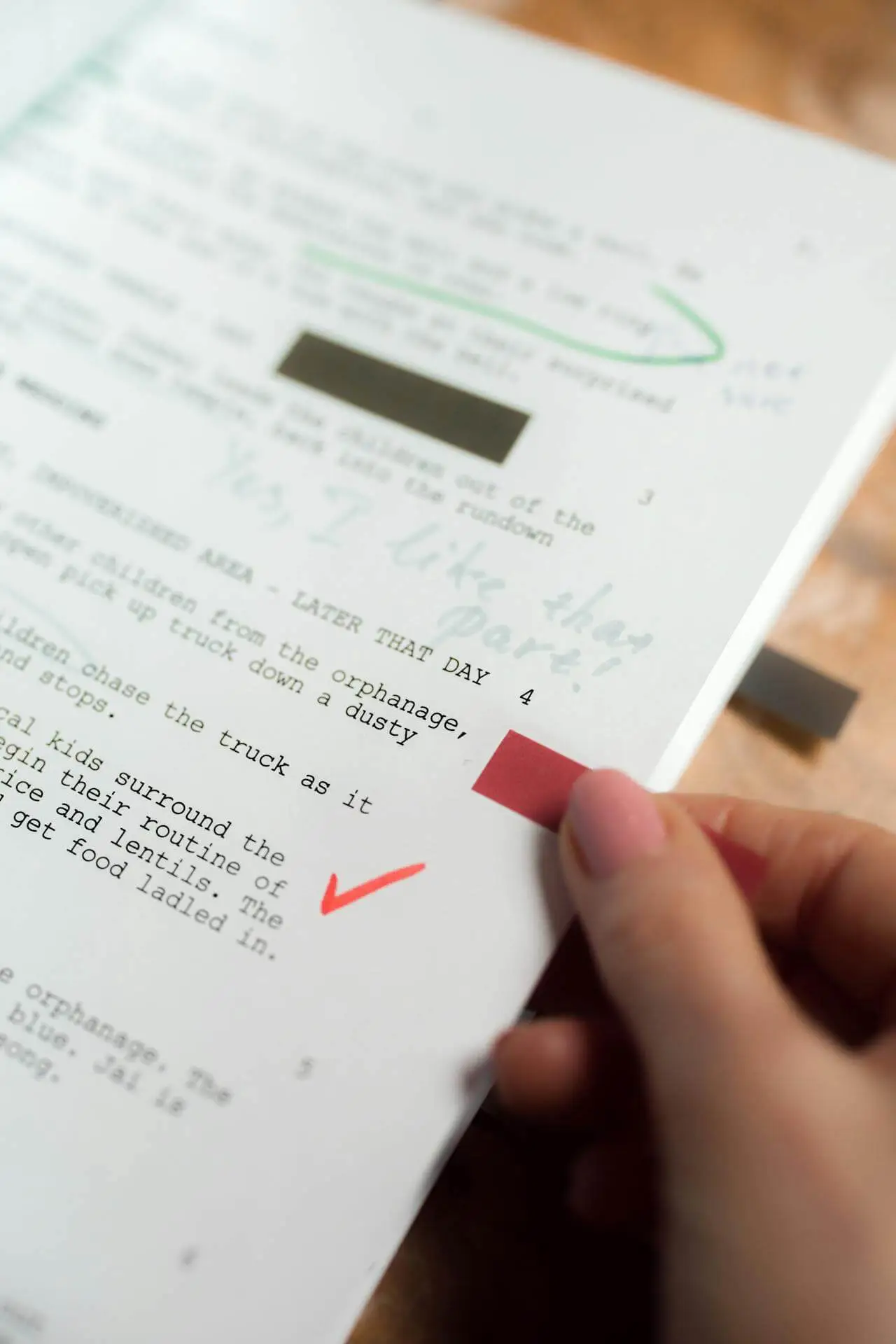Originally published November 19, 2024 , updated on November 28, 2024
Businesses and marketers face relentless competition to capture attention. Engaging content is the key to unlocking authority, trust, and lead generation. However, even the most compelling ideas can be undermined by grammatical errors, awkward phrasing, or lack of clarity.
That’s where proofreading and editing services step in. These services are the unsung heroes of polished, professional communication. They ensure your content resonates with your audience.
This guide explores everything you need to know about proofreading and editing. It provides actionable insights into creating a foolproof and proofreading strategy. And a powerful editing strategy.

What Are Proofreading and Editing Services?
Proofreading and editing services are specialised solutions designed to refine your content. Whether it’s a blog, a marketing brochure, or a website page, you need editing to polish and perfect your copy.
While they are often mentioned together, proofreading and editing serve distinct purposes. Proofreading is the final stage of review that focuses on surface-level errors. These include typos, grammar mistakes, and punctuation issues. Editing, on the other hand, is a deeper process that involves improving structure, tone, flow, and clarity. This ensures the content aligns with your message and audience.
Partnering with a proofreading and editing agency helps businesses ensure that every piece of content reflects their brand with professionalism and accuracy.
Why Are Proofreading and Editing Crucial?
Errors in your content can have serious repercussions. From losing credibility to failing to connect with your target audience.
For business owners and marketers, presenting error-free and engaging content is vital for:
1. Building trust: Mistakes in grammar or structure may lead readers to question your professionalism.
2. Enhancing clarity: A refined piece of content communicates your ideas more effectively, increasing engagement.
3. Boosting SEO: Well-edited content improves readability, which can enhance your search engine rankings.
4. Driving conversions: Clear, concise, and error-free copy can persuade your audience to take action.
Creating a Solid Proofreading Strategy
A robust proofreading strategy ensures that your content is free from avoidable mistakes. Here’s how to build one:
Plan Your Proofreading Process
A seamless and perfected proofreading strategy begins with proper planning. Allocate dedicated time for proofreading to approach the content with fresh eyes. Set clear stages for review, such as checking grammar and spelling first, followed by punctuation and formatting.
Use tools like calendars or task managers to schedule your proofreading sessions, especially for high-priority projects. Structuring the process means you ensure every detail is scrutinised and nothing is left to chance. This leads to polished, professional content.
Step Away from Your Draft
A key element of a seamless and perfected proofreading strategy is giving yourself time to step away from your draft before reviewing it. This break creates distance, allowing you to return with fresh eyes and a clearer perspective. When you’re too close to your writing, it’s easy to overlook errors or awkward phrasing.
Taking a step back, even for a few hours, sharpens your eye for spotting mistakes. It also improves your ability to evaluate the content’s flow and coherence.
Use Technology Wisely
Integrating technology into your proofreading process can make it more efficient by quickly catching common errors. Tools like Grammarly and ProWritingAid excel at spotting typos, grammar mistakes, and awkward phrasing.
However, these tools, while highly useful, are not flawless. A human review remains essential to preserve context, tone, and nuance. When used thoughtfully, technology becomes a valuable partner in producing polished, error-free content without compromising authenticity or accuracy.
Read Aloud
Reading your content aloud is a straightforward yet effective technique for refining your work. It helps you catch awkward phrasing, run-on sentences, and unclear ideas that might go unnoticed when reading silently. Hearing your words lets you assess the text’s natural flow and identify inconsistencies in tone or structure. By engaging both sight and sound, this approach ensures your content not only reads smoothly but also connects effectively with your audience.
Focus on Common Errors
Target common errors that can undermine the quality of your content. Look out for typical mistakes such as homophones (e.g., their/there), misplaced modifiers, punctuation issues, and subject-verb agreement errors. Familiarise yourself with these pitfalls and actively search for them during proofreading. This will save time and ensure a higher level of accuracy. Addressing these frequent trouble spots builds trust with your audience and enhances the professionalism of your content.
Proofread in Stages
Rather than attempting to catch everything in one go, break the process into focused steps. Start with grammar and spelling, then move to punctuation, and finally check formatting and style consistency. This layered approach allows you to concentrate on specific aspects of your content. It also reduces the chances of missing errors. Tackling one element at a time helps you achieve a polished, professional final product with greater ease and precision.
Building an Effective Editing Strategy
While proofreading catches the small mistakes, editing transforms your content into a compelling, cohesive piece. Developing a strong editing strategy involves the following steps:
1. Identify Your Goals
Before editing, clarify what you aim to achieve with your content. Are you trying to inform, persuade, or entertain? Understanding the purpose helps guide your editing decisions.
2. Evaluate the Structure
Start by reviewing the overall structure of your content. Check whether the introduction grabs attention, the body provides valuable information, and the conclusion leaves a lasting impression.
3. Optimise for Readability
Edit to enhance readability by:
- Using shorter sentences and paragraphs
- Incorporating subheadings and bullet points
- Avoiding jargon unless necessary
4. Adapt Tone and Voice
Ensure the tone and voice align with your audience. For business owners and marketers, a conversational yet professional tone works best.
5. Trim the Excess
Remove redundant words and phrases that don’t add value to your message. Concise content is more impactful.
6. Fact-Check and Verify
If your content includes data, quotes, or references, verify their accuracy. Mistakes in facts can harm your credibility.
DIY or Professional Proofreading and Editing Services?

Deciding between DIY and professional proofreading services depends on your content’s complexity and significance.
A DIY approach is cost-effective and gives you complete control. This makes it ideal for informal materials like internal memos or blog posts. However, it demands time, attention to detail. And may not achieve the polish of professional editing.
On the other hand, professional proofreading and editing services provide a higher level of accuracy, nuanced corrections, and consistency. Perfect for client-facing documents, marketing materials, or technical whitepapers.
For example, a business launching a new product can benefit from professional services to create error-free, persuasive content that connects with its audience. Meanwhile, DIY proofreading might be sufficient for simpler tasks, such as refining daily social media posts. Ultimately, the choice depends on your content’s purpose, audience, and importance.
Choosing the Right Proofreading and Editing Agency
When selecting a professional service provider, consider the following:
Industry Expertise
Ensure the agency has experience working with businesses in your sector. Familiarity with industry-specific terminology enhances the quality of editing.
Customisation Options
The best agencies tailor their services to your needs, whether you require in-depth editing or surface-level proofreading.
Turnaround Time
For marketers working on tight deadlines, timely delivery is crucial. Ask about the agency’s average turnaround time.
Portfolio and Reviews
Review the agency’s portfolio and client testimonials to gauge their reliability and skill level.
Technology Integration
Some agencies use advanced tools to complement human editors. This ensures even greater accuracy and efficiency.
Leveraging Proofreading and Editing for SEO
Beyond clarity and professionalism, proofreading and editing play a pivotal role in search engine optimisation (SEO). Here’s how:
1. Keyword integration: Effective editing ensures keywords are seamlessly woven into your content without overstuffing.
2. Improved readability: Search engines favour content that’s easy to read, leading to better rankings.
3. Meta descriptions and Titles: Editing these elements can increase click-through rates and enhance visibility.
Proofreading and Editing for Different Content Types
Different content formats require tailored approaches:
Blogs and Articles
Proofreading and editing are key to crafting polished, engaging blog content that holds readers’ attention. Blog posts connect your business with your audience, sharing insights, showcasing your brand, and building credibility.
Editing ensures clarity, structure, and tone align with your brand voice. While proofreading removes typos, grammar mistakes, and formatting issues. For example, a well-edited post on industry trends can establish trust, whereas error-filled content may harm your credibility.
Marketing Copy
Proofreading and editing are essential for marketing copy that captivates and converts. Editing ensures the language is persuasive, concise, and aligned with your brand voice, while crafting a strong call-to-action (CTA) that inspires action.
Proofreading eliminates typos and errors that could distract or undermine your message. For example, a polished email campaign with an engaging CTA can boost conversions. Whereas overlooked mistakes can erode trust. While tools can assist, professional editors bring the expertise needed to refine marketing copy into content that resonates with your audience and drives results.
Social Media Posts
Proofreading and editing are vital for social media copy. Brevity and accuracy are paramount due to character limits. Editing ensures your message is concise, engaging, and aligned with your brand voice. While proofreading catches errors that could diminish your credibility.
A single typo or unclear phrase can derail the impact of a post intended to spark engagement or drive traffic. For instance, a well-edited tweet with sharp, precise language can boost shares and likes. While an overlooked error might leave a poor impression.
Long-Form Content
Editing is essential for long-form content, where structure and depth is critical to engaging readers. Editing ensures that complex topics are broken down into clear, digestible sections prioritising logical flow and readability. This involves refining the structure, improving transitions, and ensuring each section supports the overall message. Proofreading addresses errors in grammar, punctuation, and formatting to maintain a professional presentation.
For instance, a well-edited whitepaper with clear explanations and a logical structure builds authority and trust. While disorganised or error-filled content risks losing readers’ attention. While tools can assist with basics, professional editing ensures long-form content is both informative and engaging, effectively communicating even the most intricate ideas.
Tips for Streamlining the Process
For businesses managing frequent content creation, streamline your proofreading and editing processes:
1. Create style guides: Establish rules for tone, formatting, and language to maintain consistency across all content.
2. Batch proofreading: Review similar types of content together for efficiency.
3. Invest in training: Upskill your team to improve their editing capabilities. This reduces the need for extensive external reviews.
Proofreading and Editing in a Digital Age

As content evolves, so do the tools and techniques for refining it. Many agencies now offer AI-powered proofreading solutions that complement human expertise. These innovations can help businesses optimise their content at scale.
However, human input remains invaluable. Machines cannot replicate the ability to understand context, adapt tone, and ensure emotional resonance.
The Cost of Neglecting Proofreading and Editing
Failing to prioritise content refinement can lead to missed opportunities, including:
- Lower conversion rates
- Diminished brand reputation
- Poor SEO performance
Investing in a solid proofreading strategy and editing strategy isn’t just about avoiding mistakes. It’s about elevating your content to meet — and exceed — your audience’s expectations.
The Best Proofreading Services
Polished content is the backbone of effective communication in business and marketing. By creating a thorough proofreading strategy and developing an impactful editing strategy, you can ensure that every word works hard to achieve your goals.
For businesses that want to elevate their content, partnering with a professional proofreading and editing agency is a game-changer. Whether you’re refining a website, crafting an email campaign, or producing a whitepaper, expert services ensure your message is clear, engaging, and professional.
Perfecting your content is no longer optional — it’s essential. Start refining your approach today, and watch your business reap the rewards of truly polished communication.
Post Views: 2075


















